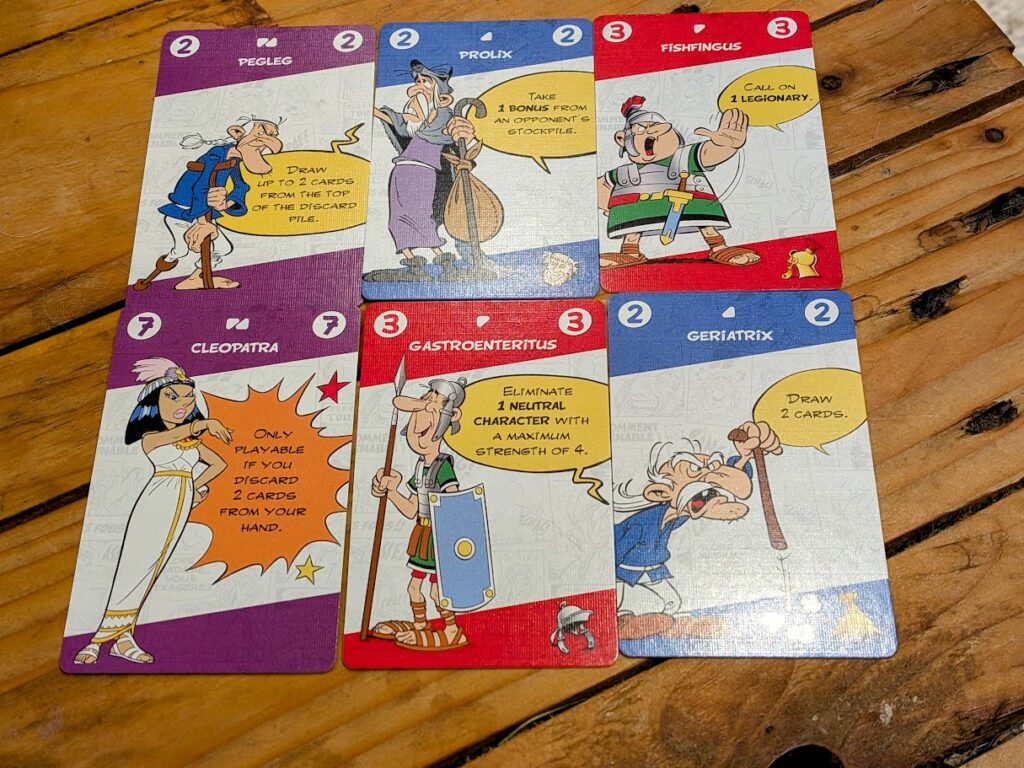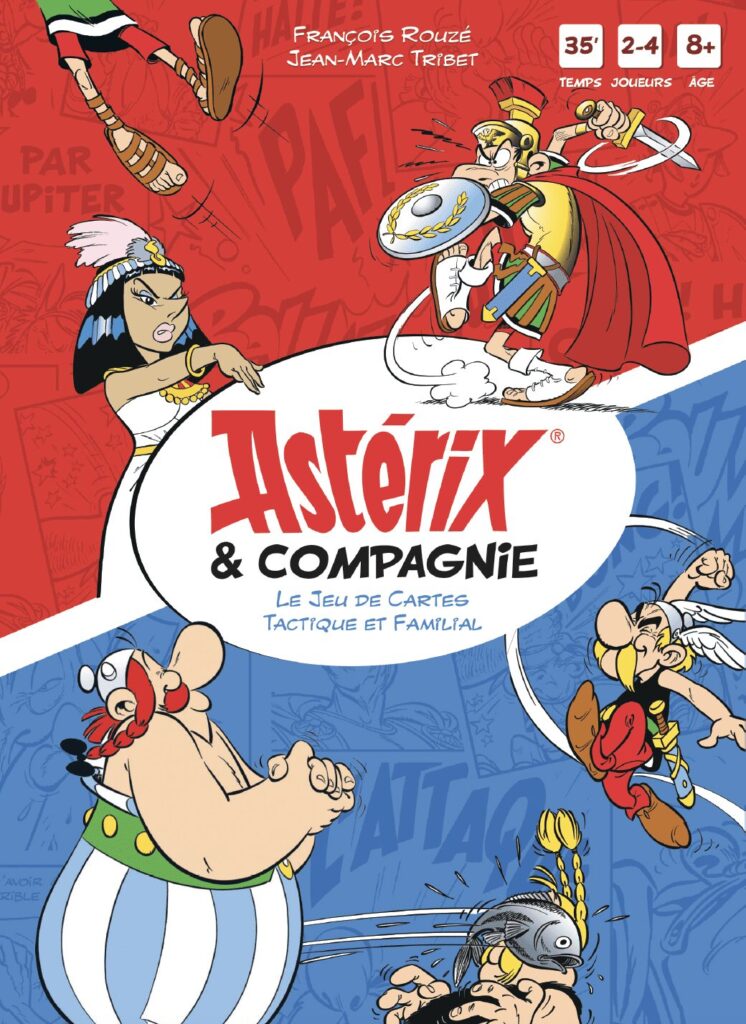A review copy of Asterix & Co. was kindly provided by Hachette Boardgames UK. Thoughts & opinions are my own.
To say I was excited to see a new game based on the adventures of Asterix and Obelix would be an understatement. I devoured the books when I was a kid. While the designer’s names – François Rouzé and Jean-Marc Tribet – might not be familiar to you, to see a game with this franchise and coming from the likes of No Loading Games (read my review of their recent hit Gwent right here) and Matagot is a good sign. Asterix & Co. is a great battling card game.

The concept behind Asterix & Co. is simple, which is precisely what you want from a game you’ll play with your family. Between you and your neighbours on both sides, there’s an album card. Think of these albums like locations that you’re trying to dominate and claim. Each album has a Gaul side and a Roman side, and you battle on the albums to your left and right at the same time.
These Romans are crazy
Each card you play has a character from the Asterix universe, some of which you’ll know, some of which you might not (more on this later). They have a value which contributes to your strength in the battles for albums and possibly a special ability. On your turn, you either play a card into one of the battles to your left and right, draw new cards, or use special ability tokens to do things like knock opponents’ cards out or revive your own.
What makes Asterix & Co. different from other games in this style is the card colouring. The fronts of cards can be Roman characters, Gauls, or neutral. Red Roman and blue Gaul cards can be used to bolster their respective battle fronts (e.g. play a Roman card to the album to your right, on the Roman side) while the purple neutral cards can be played to either. The first to 15 total power on an album card wins it. The backs of the cards are either red or blue, which means you have no way of knowing which cards may or may not be neutral.

This is important. You might be looking at your own hand, which is full of Gauls and looking at the fight for the album on your right, which needs you to play Roman or neutral cards to it. The player on your right might be holding a handful of cards which have red backs on them, useless for the Gaul side of the tug of war with you, so your attention might turn to the Gaul (blue) battle on your left instead, thinking that the fight on your right is safe for now. Little do you realise, however, that the red cards they’re holding are neutral instead of Roman, and they come along and steamroll that fight.
It’s great, it means you can never be 100% sure of what your opponents are holding. You can only have an educated guess.
Changing times
I think it’s only fair to highlight one aspect of the game which might come as a surprise to you if you’re not a fan of the Asterix books. The characters are all really strong caricatures, and while it was ‘of its time’ and always has been, arguably tongue-in-cheek and satirical, some of its depictions might come as a bit of a shock. The Pirate Lookout in particular caught me off guard.

I remember the character (Baba, as he’s known practically everywhere else). He and his pirate crew always ended up getting thumped by Asterix and friends, but in the 35+ years since I read the books, the world has changed. His look is certainly toned down compared to how I remember (the bright red lips are gone, for instance), but you might still be a little shocked.
I’m not here to tell you what you can or cannot like. Baba is a fondly remembered character, and the artwork is true to the original source. If you went back and read the original books now (especially those like the Cleopatra book and its slave characters), or the depictions of people in other series (Tintin in the Congo springs to mind), I think you’d agree that they’d never get published as new books now.
Enjoying this article? Consider supporting me.
My goal here is just to make you aware of something in the game that gave even me, a huge Asterix fan, a bit of a double-take.
Final thoughts
Despite that particular card catching me off guard, Asterix & Co. is a very good game. I had some worries going into it, because of the designers I wasn’t familiar with, and knowing that someone could print ‘Asterix’ on any old trash and it’d sell. They haven’t done this, though. It’s a really enjoyable game. That’s not to say that it feels very Asterix. Other than the artwork, there’s nothing thematically that makes it feel like you’re doing anything very Asterixy. If you want to get some of that feeling, you need to narrate each card as you play it.
The tug of war gameplay is really interesting. You might have played something like the Between Two Castles games (read my review of Between Two Castles: Essential Edition right here) where you share an objective with your neighbours on both sides, but this is competitive instead of cooperative, and it’s a surprisingly tricky thing to concentrate on fighting on two fronts at once. I’m particularly pleased with the way there are three decks of characters, but only two visible suits. That element of the unknown is a fun little twist.
While it works with two players, it’s definitely best with three or four of you duking it out. It’s a charming game full of interesting choices, second-guessing, and a love letter to the characters you remember from your youth.

Asterix & Co. (2025)
Design: François Rouzé, Jean-Marc Tribet
Publisher: No Loading Games, Matagot
Art: Uncredited
Players: 2-4
Playing time: 30-35 mins


